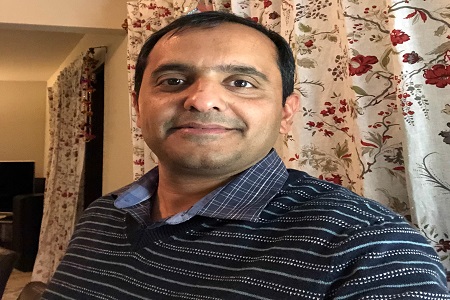
Speaker: Nachiket Raravikar, Ph.D.
Affiliation: Principal Engineer at Stealth Startup
How Can Materials Enable The Future Device Technologies? – Hierarchical Materials Perspective
Hierarchically assembled materials open up a lot of creative possibilities that cannot be fully realized with existing material building blocks. Such possibilities have been explained by invoking examples from electronic industry, where hierarchically designed materials could potentially provide step-improvements over existing options. One of the areas of opportunity for hierarchically designed materials is in thermal management of devices, where many thermal interface materials technologies have been proposed in the past for effective cooling of the semiconductor chips. However, increasing integration imposes too many challenges for most to succeed. Our research has indicated that one of the best ways to address the thermal management challenge is by creating acoustic match through covalent functionalization of thermally conducting materials to allow ‘seamless’ phonon transport. Silicon or metallic surfaces with covalently bonded carbon nanotubes in particular, showed a factor of six improvements in interfacial thermal transport over those interfacing with non-bonded nanotubes. This work indicates that just having aligned carbon nanotubes is not enough to achieve the desired thermal performance; a hierarchy of covalent linkers between nanotubes and external surfaces is essential. Based on this research, it is possible to envision hierarchically assembled thermal interface materials with acoustically interlinked fillers, which could provide large improvements in thermal transport even with conventional fillers such as aluminum. Another area of opportunity for hierarchical assemblies is energy storage, especially in biocompatible systems. Our research indicates that pseudocapacitors made of biocompatible hydrogels (Amikagels) and transition metal electrodes (SnOx) can be potentially used as the non-toxic alternatives for energy storage. Further improvements in energy density are possible by using hydrogels containing strong Lewis acid/bases, such as amines, that help generate greater concentration of redox pairs. Based on this research, it is possible to envision a biocompatible energy storage device that could maximize the energy density through hierarchical assembly of high surface area transition metal electrodes separated by the hydrogel electrolytes that use strong Lewis acid-bases. Critical to the success of hierarchical materials assembly would be identification of the right material building blocks and the manufacturing approaches. Hierarchical materials will help bridge the ‘length-scale gap’, between properties realized at nano- or micro-scale, and the application requirements that are often at millimeter or larger length scales.
About the Speaker
Nachiket Raravikar has a Ph.D. in Materials Science and Engineering from Rensselaer Polytechnic Institute, Troy, New York. He currently works as Principal Engineer at a Stealth Startup. Prior to that, he worked at Apple, Inc. in Cupertino, CA, as a reliability engineer. Nachiket also worked at Intel Corporation in Phoenix, Arizona for 12 years as a Technologist in semiconductor package pathfinding. He has extensive research and development experience in electronic materials, nano-materials, device manufacturing processes, materials supply-chain, and reliability. He has filed approximately 33 patent applications, with over 15 granted. Nachiket has 15 publications in peer-reviewed journals, and has recently co-authored a book on semiconductor packaging.
Date/Time:
Date(s) - Jan 12, 2018
10:30 am - 12:00 pm
Location:
2101 Engineering V
420 Westwood Plaza Los Angeles CA 90095
